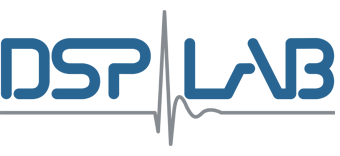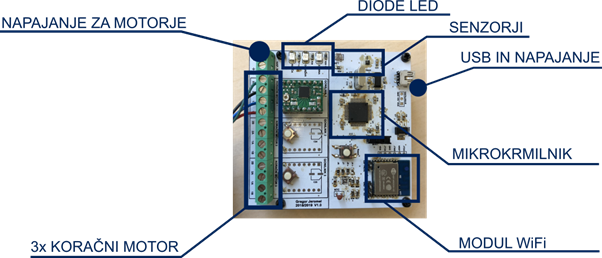Student project
The most powerful IoT node has largest dimensions, while offering the highest processing capacity. The primary task of the development plate is to control the stepper motors for the blinds through a specially designed clutch. The board includes three drivers for stepper motors, a WiFi module, an air quality sensor, and a temperature and humidity sensor. Some LEDs and a 32.768kHz crystal have been added to ensure the correct clock speed of the RTC register in the STM32L152 microcontroller. The selected microcontroller is of low energy type and should be suitable for battery powered devices. Programming of the microcontroller is performed via USB bus in DFU mode, but also via SWD JTAG. The same USB bus can be used to debug a program or interact with a device via a PC. Due to its design and high processing capacity, this board offers the most flexibility in using different protocols. In the first phase, the board offers two different communication interfaces (USB and or WiFi). In a rapidly evolving IoT world, the ability to change the protocols used at individual levels of the IoT protocol stack is crucial. Due to its high processing capacity, the board enables the TCP and UDP transport layer to be independently modified. On the application layer, we can implement both currently most used protocols of this layer in IoT, that is, MQTT and CoAP, and we can also experiment with the HTTPS protocol. The tile also allows us to implement the LwM2M intercommunication protocol implemented over the CoAP protocol using the CoAP protocol. In the first phase, the tile is equipped with a WiFi physical connection, which we intend to upgrade in the second phase with a BLE connection, which would bring flexibility and the ability to test both network layer and physical layer protocols.
The smaller development boards for IoT node are equipped with a WiFi module, which is also a microcontroller. The development board is less processor efficient than the DPSLAB SUN board and is suitable for implementation in battery-powered IoT sensor nodes. The other peripherals on the plate are just the temperature sensor on the MARS plate and the IR transceiver on the MOON plate and the housing for two AAA batteries. The task of the MARS sensor node is to send data from one sensor at specified intervals to the IoT network. In more specific cases, however, the node can perform the task of the IR controller, which is done by the MOON board.




Nothing Found
Sorry, no posts matched your criteria